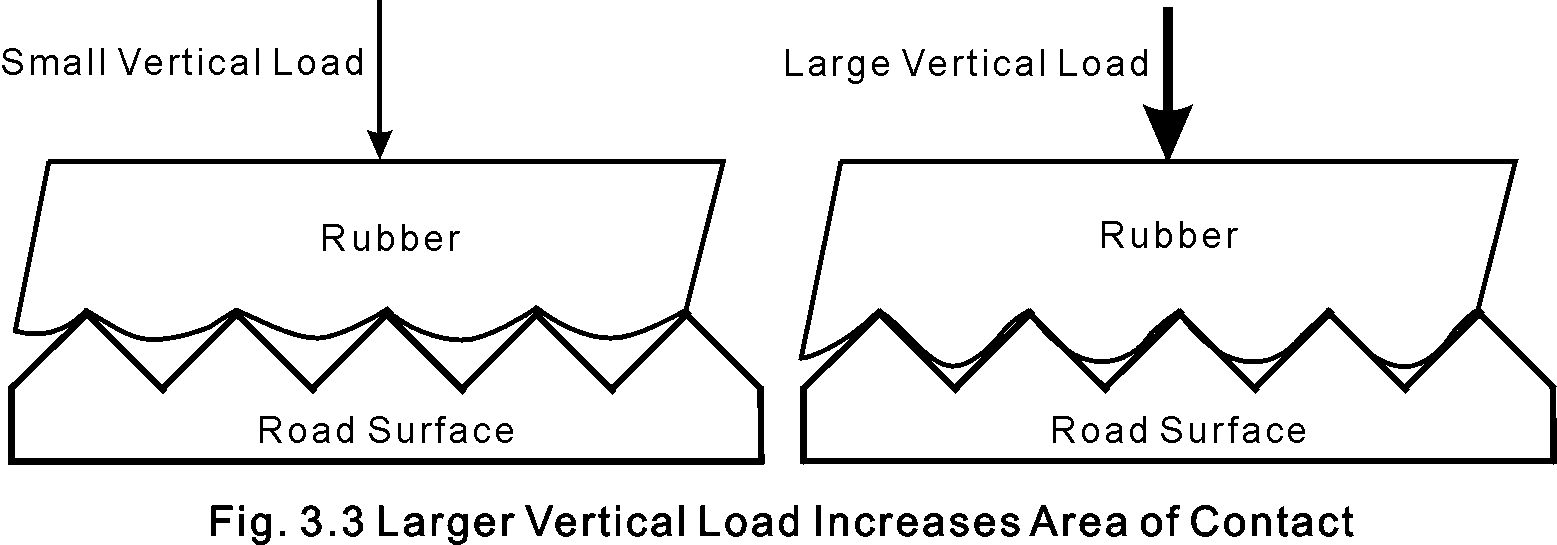I was wondering if anyone could help me to understand the behavior of the automotive pneumatic tire. In particular I am interested about the load sensitivity. I have read various sources on the subject but have yet to find a satisfactory answer.
I understand that the two primary means by which ‘traction’ is generated are adhesion and deformation:

*Source:
Adhesion is the more predominant mechanism on dry smooth (i.e paved) surfaces. Deformation on the other hand is critical for traction on rough and/or wet surfaces.
What I don’t understand is why increasing the load on tire when adhesion is the predominant traction mechanism results in a reduction of the effective coefficient of friction (eCf). It seems logical to me that increasing the load on the tire should increase the contact patch to some extent and also increase the load per unit area on the contact patch. Both of these seem desirable for increasing the eCf of the tire. So why then does increasing the load per unit area on the contact patch reduce the eCf when adhesion is the predominant mechanism for grip?
TIA
I understand that the two primary means by which ‘traction’ is generated are adhesion and deformation:

*Source:
Adhesion is the more predominant mechanism on dry smooth (i.e paved) surfaces. Deformation on the other hand is critical for traction on rough and/or wet surfaces.
What I don’t understand is why increasing the load on tire when adhesion is the predominant traction mechanism results in a reduction of the effective coefficient of friction (eCf). It seems logical to me that increasing the load on the tire should increase the contact patch to some extent and also increase the load per unit area on the contact patch. Both of these seem desirable for increasing the eCf of the tire. So why then does increasing the load per unit area on the contact patch reduce the eCf when adhesion is the predominant mechanism for grip?
TIA

